

Sculptures made by Du Yongwei in his workshop in Dunhuang, Gansu province. (Source: China Daily/Bi Nan)
BEIJING, Sept. 10 -- As a world-renowned sacred Buddhist site, there is almost too much to explore in the Mogao Grottoes in Dunhuang, Gansu province. The exquisite sculptures and murals in its hundreds of caves make it a grand art gallery and a miracle of history.
In addition to preserving the grottoes there is still much to do such as passing down the ancient cultural heritage and keeping it alive in the modern age. Two representative inheritors have shared their efforts in carrying forward the traditions.
Modernizing the traditional way of making sculptures
Du Yongwei is a local sculptor creating Dunhuang colored sculptures. He is one of a few left who still use the traditional methods inherited from ancestors.
The traditional manner means first using red willow from the Gobi desert to make a frame, filled with needlegrass and reed. This is then molded with Dengban soil. All materials are sourced locally and the sculptures produced can last for more than 1,000 years, like the sculptures in the Mogao Grottoes. The technique was listed as a provincial intangible cultural heritage of Gansu province in 2008.
Du is now considering how to use traditional techniques to create new-style sculptures which can combine the essence of the old with modern beauty.
He tries using metal and soil to create sculptures such as flying Apsaras and other characters which are popular.
He is also teaching art students the traditional technique and invites them to his workshop for hands-on experience. As there are only a few artists still using the traditional technique, he is worried, saying: "I hope the traditional techniques can keep being handed down and I'm making my best efforts for that".
Coping murals can beautify them
Numerous painters are copying murals from the Mogao Grottoes, but Gao Shan's paintings will definitely impress. Entering his workshop, visitors have the illusion of being in one of the Mogao caves.
He draws on paper pasted to the wall to make it feel like painting a mural, and when finished, he can easily take it down. His paintings create the texture of murals, which feel more like relics rather than new creations. At the same time he replaces missing parts of the original figures and adjusts the characters' skin tone to make the overall painting more enjoyable to modern people's eyes.
The adjustments are not easy and he is exploring ceaselessly. Now he has eight apprentices, and one has been learning for 12 years. He is still studying himself and new challenges keep popping up.
"There are over 300 mural caves in the Mogao Grottoes, and I have only copied murals in less than one tenth of them yet", Gao says.
 |
Day|Week

 Have you met her? Campus belle from Wuhan University
Have you met her? Campus belle from Wuhan University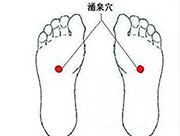 Expert reveals top five longevity acupuncture points
Expert reveals top five longevity acupuncture points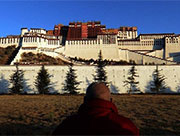 China Will Never Accept Dala Lama’s “Middle Way”
China Will Never Accept Dala Lama’s “Middle Way” Villagers Loot Ten Thousand chicks from Overturned Truck in Shandong
Villagers Loot Ten Thousand chicks from Overturned Truck in Shandong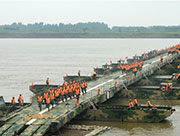 PLA builds 500m pontoon bridge in 15 minutes
PLA builds 500m pontoon bridge in 15 minutes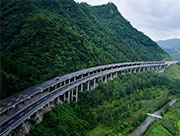 Aerial photos of highways in the 'Mountain City'
Aerial photos of highways in the 'Mountain City'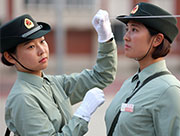 The only female soldiers' formation at China's V-Day Parade
The only female soldiers' formation at China's V-Day Parade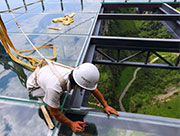 Asia’s largest glass viewing platform to open soon
Asia’s largest glass viewing platform to open soon